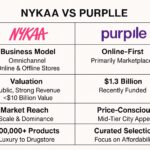Short-Form Video Showdown: TikTok’s Innovative Edge Against YouTube Shorts and Instagram Reels’ Integrated Power
April 30, 2024
Industry: Media And Entertainment

The comparative analysis between TikTok, YouTube Shorts, and Instagram Reels provides a detailed overview of their market positions in the short-form video content domain. TikTok leads with personalized content and global reach, YouTube Shorts capitalizes on an extensive monetization system and search capabilities, and Instagram Reels benefits from strong integration with its social network. Each platform’s unique strengths and weaknesses are highlighted, including TikTok’s regulatory challenges, YouTube’s integration issues, and Instagram’s originality concerns. This analysis helps understand how these platforms compete and evolve to dominate the digital content market.
In the rapidly evolving domain of short-form video content, TikTok, YouTube Shorts, and Instagram Reels stand out as key contenders, each backed by distinct strategies, foundational strengths, and ambitious visions set by their founders. This analysis delves into their business models, user engagement strategies, market valuation, and leadership, providing a holistic view of how they compete in this dynamic market.
TikTok
Business Model: TikTok primarily generates revenue through in-app advertising, including various formats such as native ads, brand takeovers, and hashtag challenges. Additionally, it profits from in-app purchases related to virtual gifts and coins.
User Engagement: Known for its highly addictive algorithm, TikTok excels in creating personalized content streams that keep users engaged. Its interface facilitates easy content creation and social interaction.
Valuation: As of 2024, TikTok’s valuation has soared, reflecting its exponential user growth and substantial market impact, reportedly reaching over $400 billion. Founders: TikTok, developed by ByteDance, a company founded by Zhang Yiming, reflects his vision of leveraging AI to revolutionize content consumption.
Strengths and Weaknesses: While TikTok boasts a vast global reach and a strong creator community, it faces ongoing regulatory scrutiny and data privacy concerns.
YouTube (Shorts)
Business Model: YouTube monetizes Shorts through its established advertising network and recently integrated this format into its YouTube Partner Program, allowing creators to earn revenue directly.
User Engagement: Leveraging its massive content library and existing user base, YouTube promotes Shorts alongside longer videos, utilizing its robust search and recommendation algorithms.
Valuation: YouTube, as a part of Google, contributes significantly to Alphabet’s overall valuation. YouTube itself has been estimated to be worth over $300 billion if it were a standalone entity.
Founders: YouTube was founded by Steve Chen, Chad Hurley, and Jawed Karim, with a vision that remains evident in YouTube’s ongoing innovation and adaptability, including its entry into the short-form video segment.
Strengths and Weaknesses: YouTube offers comprehensive monetization options for creators and a trusted brand reputation, but it faces challenges integrating short and long-form content seamlessly.
Instagram (Reels)
Business Model: Instagram profits primarily from advertising, with Reels integrated into this model via interstitial ads and branded content.
User Engagement: Reels benefits from Instagram’s extensive network, allowing users to engage with a variety of content types seamlessly within one platform.
Valuation: Instagram, as a critical part of Meta Platforms, contributes heavily to its parent company’s valuation, which stands at several hundred billion dollars.
Founders: Instagram, founded by Kevin Systrom and Mike Krieger, now under the leadership of Meta Platforms, reflects ongoing innovation in integrating new content formats to keep the platform engaging and competitive.
Strengths and Weaknesses: Instagram Reels enjoys robust integration with other Instagram features and a large user base but often faces criticism for being overly similar to TikTok.
Comparative Analysis
- Market Reach and Penetration: TikTok leads with a younger, highly engaged global audience. YouTube and Instagram benefit from broader demographic reach and established user loyalty.
- Content Discovery: TikTok’s personalized feed is highly effective in engaging users, while YouTube excels with its search-driven approach. Instagram’s integration with other features enhances user stickiness.
- Creator Ecosystem: YouTube’s mature monetization avenues offer potentially higher earnings, whereas TikTok and Instagram provide tools that help creators gain rapid popularity.
- Regulatory and Privacy Concerns: TikTok is frequently scrutinized for data practices, potentially affecting user trust, whereas YouTube and Instagram operate under more established regulatory frameworks.
Conclusion
TikTok remains a powerhouse in short-form video due to its innovative algorithm and strong market penetration. However, YouTube Shorts and Instagram Reels leverage their robust platforms and existing networks to offer significant competition. The vision and groundwork laid by their founders have shaped these platforms’ strategies in the face of evolving user preferences and technological advancements.








